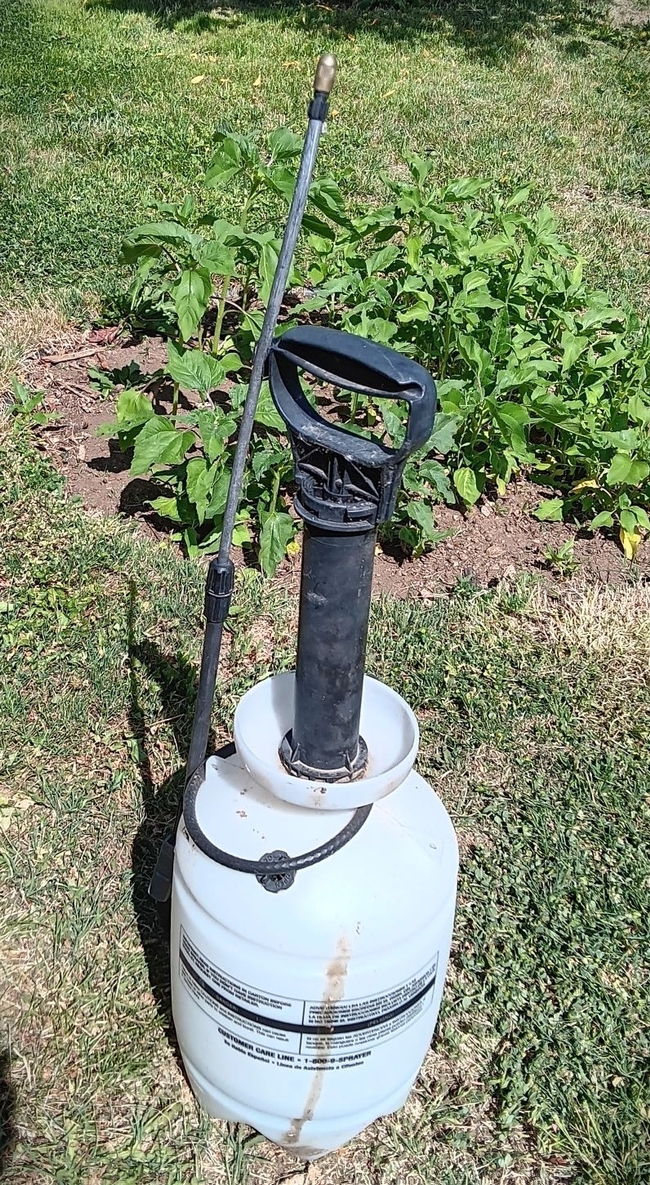
It's a common frustration that anyone with a garden or landscape can relate to. I think that the temptation to apply undiluted herbicide stems from a widely held belief that the language on the label about human safety, environmental hazards, and the mixing instructions are just veiled regulatory activism designed to water down an effective product, sacrificing potency in service of some ulterior green agenda.
If you're like my friend and the conventional concerns aren't persuasive in the face of your weed woes, you may find it more persuasive (like he did) to know how declining to mix herbicides can actually make them a less effective tool in your quest for weed vengeance.
Misapplication Can Be a Waste of Your Time and Money
Herbicides can be broken up into several different categories, but two big ones are contact vs. systemic. A contact herbicide damages only the parts of the plant that it touches. Systemic herbicides translocate, meaning they move throughout the plant and poison the entire plant regardless of the point of contact.
Many well-known, home-use, brand-name weed killers sold at your garden center are systemic herbicides. When you use an excessive dose of systemic herbicide, it can damage the conductive tissue at the point of contact. This means that the material doesn't get translocated effectively and ends up working more like a contact herbicide, burning the parts of the plant it came into contact with and leaving others healthy and able to regrow. Systemics typically cost more than contact herbicides, making your cost per application higher.
Using systemics undiluted (and thus using more product) means that your cost per application is even higher than that. If you didn't mix your herbicide, you may not get the control that you need, and perhaps worse, you will have paid a premium to do it! This wastes your time and money. Don't do it to yourself. (And it's not legal and could be unsafe to you or animals.)
Microbial Breakdown
Some herbicides boast longer control for weeks or months. In the pesticide industry, this is called “residual action” or “pre-emergent action” in the weed control game: an herbicide that continues to work for a period of time after the application to ward off future weed incursions. Several things affect an herbicide's residual action, but one of the big ones is microbial breakdown.
Soil microbes are microscopic life forms like bacteria, fungi, protozoa, etc., that live in the soil. They break down all kinds of materials in the soil into their basic parts for use in their own growth and development, with different microbes being better adapted to breaking down one kind of material or another. Those materials include herbicides, which is great news because it means that herbicides don't hang around in our soils forever. However, it can be bad news when we abuse herbicides.
When we over-apply our herbicide either through dosage or application frequency, we could create a microbial imbalance in the soil. We kill some species of microbes vulnerable to the material while encouraging the population of others that are adapted to thrive on breaking down that specific material. In addition to the implications for the health of your soils, this imbalance also means that our residual herbicides are actually shorter-lived as they come into contact with a super population of soil microbes that break it down more rapidly. This is called “enhanced microbial degradation,” where pesticides are broken down more rapidly than they would be under normal conditions, even within a few hours. Like systemics, residual/pre-emergent herbicides typically come at a premium price, and your money can be wasted if your applications start becoming dinner time for a booming population of hungry microbes.
It will also mean that you won't get the longer-lasting control that you wanted and paid for, making breakout weeds and headaches more likely.
Spray Adjuvants
When you buy an herbicide, you aren't just paying for the active ingredient(s); you're also getting what they call the adjuvant package. Adjuvants are materials added to the herbicide formulation not necessarily to make the poison more poisonous, but to enhance the act of applying the herbicide itself.
If you were an herbicide manufacturer and you had a product that would work great if it didn't just bead up on the plant's surface, you would add an adjuvant to reduce the surface tension of the product. If it is too thin and runs off the plant before it can deliver the material, then there's an adjuvant for that too. Does it break down and become inert at certain soil or water pH levels? Does it gum up sprayers? Does it foam? Are the droplets too fine and prone to drift? Adjuvants have you covered. There's an adjuvant for nearly any application.
When manufacturers formulate their adjuvant packages, they do so with the assumption that you will follow the mixing instructions on the label. The adjuvants are designed to work best at the concentrations listed. Some of them are even activated by mixing them with a solvent like water or oil. If you apply the herbicide without mixing, then the active ingredient may not be delivered, or its mode of action hindered, all because you thought you knew how to use the product better than the people who designed and tested it.
Manufacturers want their products to work and to make you a satisfied customer willing to repeat your business. The label is how manufacturers communicate to their customers how to use their product for best results. When herbicides are used judiciously and responsibly, they can be powerful tools, especially when integrated with other weed management practices such as mulching, hoeing, and sensible irrigation practices. But don't skip the label!
Failure to follow label guidelines can lead to unintended consequences not just for the environment but for your busy schedule and your wallet as well.